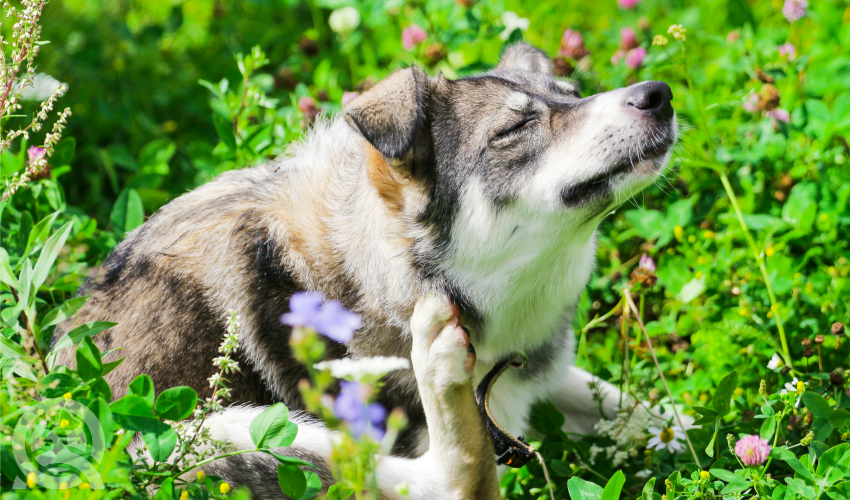While the cause is a controversial issue, dogs and cats experience allergies at a much greater rate today than they did several decades ago. Like humans, pets can be allergic to environmental factors like ragweed or dust, or they can be allergic to certain foods.
While there are allergy test to help determine environmental allergies in dogs and cats, it’s very difficult to identify food allergies in pets. Usually, it’s a question of identifying the main symptoms, and then eliminating different proteins until those symptoms disappear.
As a pet professional, you may encounter pet owners who are unaware that their dog or cat may have an allergy that requires attention. So what are some of the main symptoms of food allergies, and what can you do if you suspect an allergy?
Symptoms
An allergy is an auto-immune condition. The body’s immune system reacts to an allergen as if it’s a threat, and reacts violently. Usually this causes swelling in certain organs, which presents itself in different ways.

Dandruff and Itchy Skin
While this is more common as a response to environmental allergens, it’s not uncommon for pets with food allergies to have very itchy skin. Their skin will be dry and brittle, and you’ll find dandruff pretty much everywhere. Often times, the dog or cat will scratch non-stop, to the point of scratching or chewing their fur off and damaging their skin.
Pyoderma
More than just itchy skin, pyoderma is an opportunistic skin infection that occurs in dogs with allergies. This will cause extremely itchy, dark spots on the dog’s skin and likely hair loss as well. Pyoderma often resembles hot spots, but requires antibiotic treatment.
Ear Infections
Yeast infections in the ears is a very common symptom of dogs with allergies. The ears are sensitive to begin with, and with a compromised immune system thanks to the allergy, yeast or other bacteria will take advantage of a hospitable environment and move in quickly.
Gas
A dog with food allergies or food intolerances will likely have frequent and horrible-smelling gas. Some owners might not recognize this as a symptom, especially if the dog has a reputation for being gassy. They’ll be amazed what a change in diet can do in this case!
Soft and/or bloody stools
Just like humans, constant exposure to an allergen will lead to more and more severe reactions. If a dog is fed a food he’s allergic to twice a day for years, eventually this will take its toll on the dog’s digestive system. His colon will cease being able to absorb nutrients properly, and this will lead to soft stools or even diarrhea. Severe reactions will also result in colitis, or blood in the stool.
Treatment
If a dog is exhibiting some or most of the symptoms listed above, he may very well have a food allergy that must be addressed. There are various treatment options available for these pets.
Veterinary Treatment
If the dog is experiencing any symptoms more than mild itchiness, he should be referred to a veterinarian who can at least rule out more serious conditions. The vet can prescribe antibiotics and steroids that will treat some of the immediate symptoms and make the dog much more comfortable. Though medicine won’t cure an allergy, it will just temporarily reduce the severity of symptoms.

Grooming
Frequent baths can help a dog with itchy skin be much more comfortable. Similarly, cleaning a dog’s ears on a regular basis can help reduce the frequency and severity of ear infections. If you’re dealing with a thick-coated dog with severe pyoderma, shaving the dog can help the skin breathe and can allow the owner to better treat the underlying infection.
NOTE – Be careful with the products you use when grooming a dog with allergies! Allergies are often the cause of yeast infections in dogs, both on the skin and in the ears. Many groomers will reach for an oatmeal-based shampoo for itchy dogs, but this is the WORST thing you can do if the dog’s itchiness is caused by a yeast infection. The yeast will feed on the oatmeal and multiply. Instead, use a mild hypoallergenic shampoo, or an antibacterial shampoo provided by the vet.
Elimination Diets
The only way to effectively treat a food allergy is to identify the allergen, and then keep the dog away from it!
The first course of action will be to put the dog on a very strict diet to reduce exposure to potential allergens. Ideally, the dog will be put on a brand new food – one made from a protein that he’s never had before (therefore, it can’t be the cause of his current allergy). This new food should also contain as few ingredients as possible. Remember, commercial processed dog food (kibble, canned food) is packed with preservatives, by-products, grains, fillers, etc… all of which the dog could be allergic to.
While this is controversial, many pet owners view allergies as the final straw, and opt to switch their dog to a raw diet, where they can put the dog on one single protein and nothing else. Others will settle for prescription “limited ingredient” diets that contain as little as 10-12 ingredients.
It can take time for an allergen to completely leave a dog’s system. So even on an elimination diet, the dog can continue to have allergic reactions for several weeks. It’s therefore important for owners to realize that any elimination diet must be followed strictly for at least a few months before any improvement can be expected.

The Take Away
Food allergies are one of the most irritating conditions pet owners and pet professionals have to deal with, because they’re so difficult to identify. But taking the time to properly identify an allergen – and then keep the pet away from it – can lead to a much happier, healthier, and longer life for our furry friends!
Have you ever dealt with pet allergies? Let us know in a comment!
Looking to expand your grooming business? Here are some special services you can offer as a professional dog groomer!



